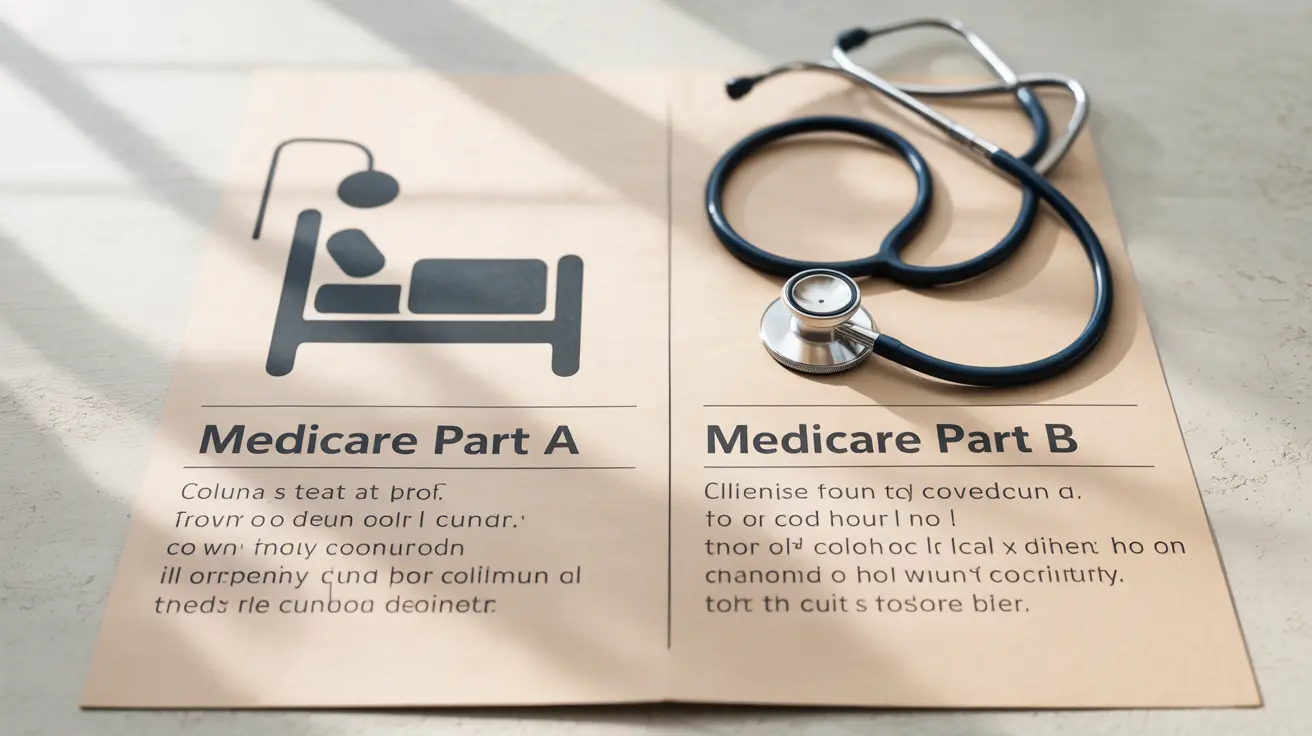Navigating the complexities of Medicare can be challenging, especially when it comes to understanding the differences between Part A and Part B coverage. These two fundamental components of Original Medicare serve distinct purposes in providing healthcare coverage for eligible individuals. This comprehensive guide will help you understand how these parts differ, their costs, and what they mean for your healthcare needs.
Key Differences Between Medicare Part A and Part B
Medicare Parts A and B work together but cover different aspects of your healthcare. Part A primarily covers inpatient care, while Part B focuses on outpatient services and preventive care. Understanding these distinctions is crucial for making informed healthcare decisions.
Medicare Part A Coverage Overview
Medicare Part A, often called "hospital insurance," provides coverage for:
- Inpatient hospital stays
- Skilled nursing facility care
- Hospice care
- Some home health care services
Most people receive Part A premium-free if they or their spouse paid Medicare taxes for at least 40 quarters (10 years) during their working years.
Medicare Part B Coverage Overview
Medicare Part B, known as "medical insurance," covers:
- Outpatient care and services
- Preventive services
- Medical supplies
- Clinical laboratory services
- Ambulance services
- Durable medical equipment
Eligibility and Enrollment Requirements
Eligibility for Medicare Parts A and B typically begins when you turn 65. You may qualify earlier if you have certain disabilities or specific medical conditions. Most U.S. citizens and permanent residents are eligible for Medicare when they meet age or disability requirements.
Initial Enrollment Period
Your Initial Enrollment Period (IEP) spans seven months, including:
- Three months before your 65th birthday
- The month of your 65th birthday
- Three months after your 65th birthday
Costs and Premiums for 2025
Understanding the costs associated with Medicare Parts A and B is essential for financial planning. For 2025, the costs are structured as follows:
Part A Costs
Most beneficiaries don't pay a premium for Part A. However, if you do need to pay:
- Hospital deductible applies for each benefit period
- Daily coinsurance may apply for extended hospital stays
- Additional costs for skilled nursing facility care after 20 days
Part B Costs
Part B involves regular costs including:
- Monthly premium (amount varies based on income)
- Annual deductible
- 20% coinsurance for most services
Special Enrollment Circumstances
There are special enrollment periods for those who delayed Medicare enrollment due to current employment or other qualifying circumstances. Understanding these periods is crucial to avoid late enrollment penalties and gaps in coverage.
Frequently Asked Questions
What is the difference between Medicare Part A and Part B coverage? Medicare Part A primarily covers inpatient hospital care, skilled nursing facilities, hospice, and some home health care. Medicare Part B covers outpatient care, preventive services, medical supplies, and equipment.
Who is eligible for Medicare Part A and Part B, and when can I enroll? U.S. citizens and permanent residents aged 65 or older are typically eligible. You can also qualify under 65 with certain disabilities. The Initial Enrollment Period begins three months before your 65th birthday and extends three months after.
How much do Medicare Part A and Part B cost in 2025, including premiums and deductibles? Most people get Part A premium-free. Part B requires a monthly premium based on income, plus an annual deductible and 20% coinsurance for most services. Specific amounts are adjusted annually.
What types of services are covered under Medicare Part A versus Part B? Part A covers inpatient hospital stays, skilled nursing care, hospice, and some home health care. Part B covers outpatient care, preventive services, medical supplies, and durable medical equipment.
What are the enrollment periods for Medicare Part A and Part B, and what happens if I miss them? The Initial Enrollment Period is seven months around your 65th birthday. Missing this period may result in late enrollment penalties and coverage gaps unless you qualify for a Special Enrollment Period due to current employment or other specific circumstances.




